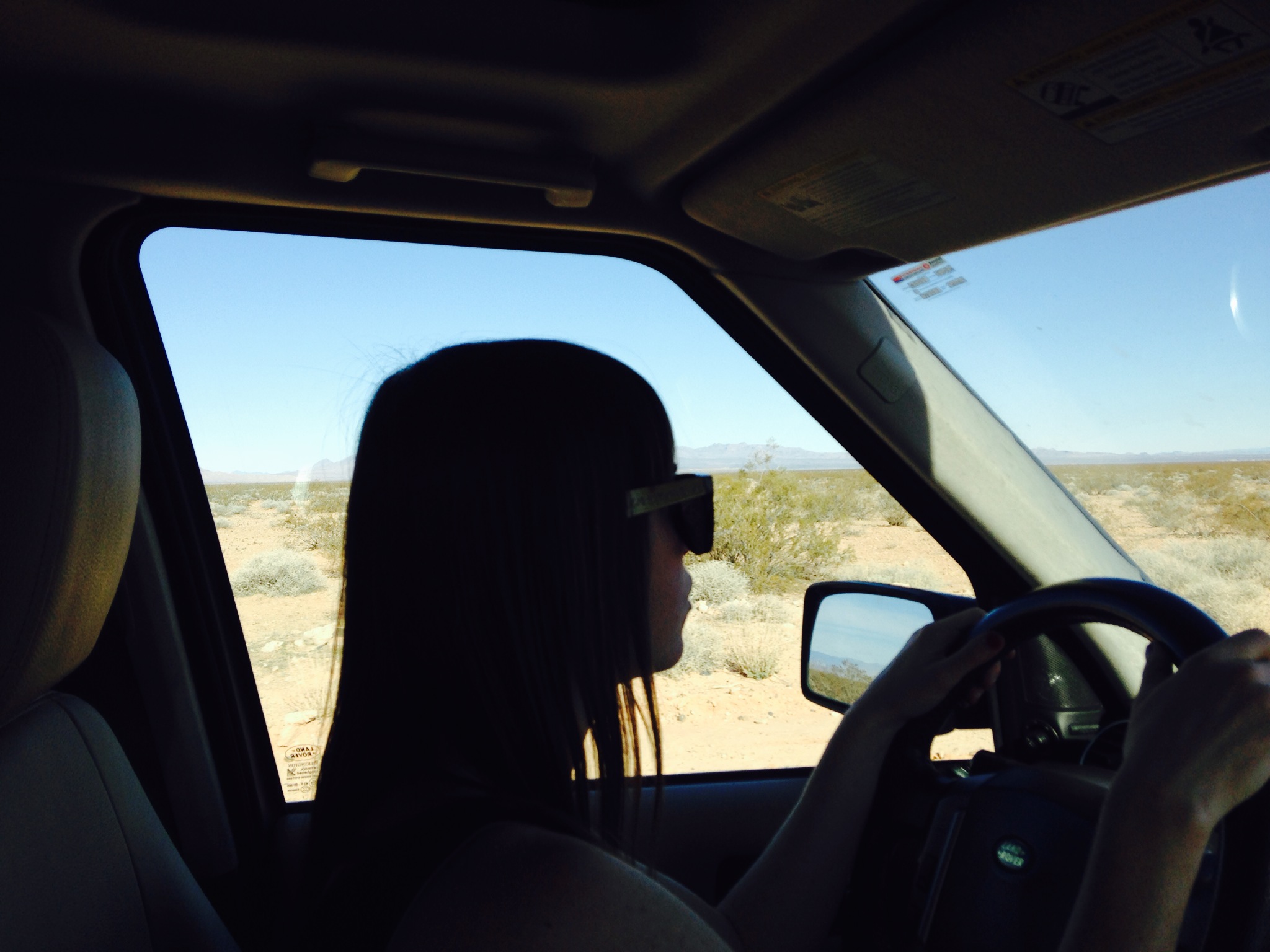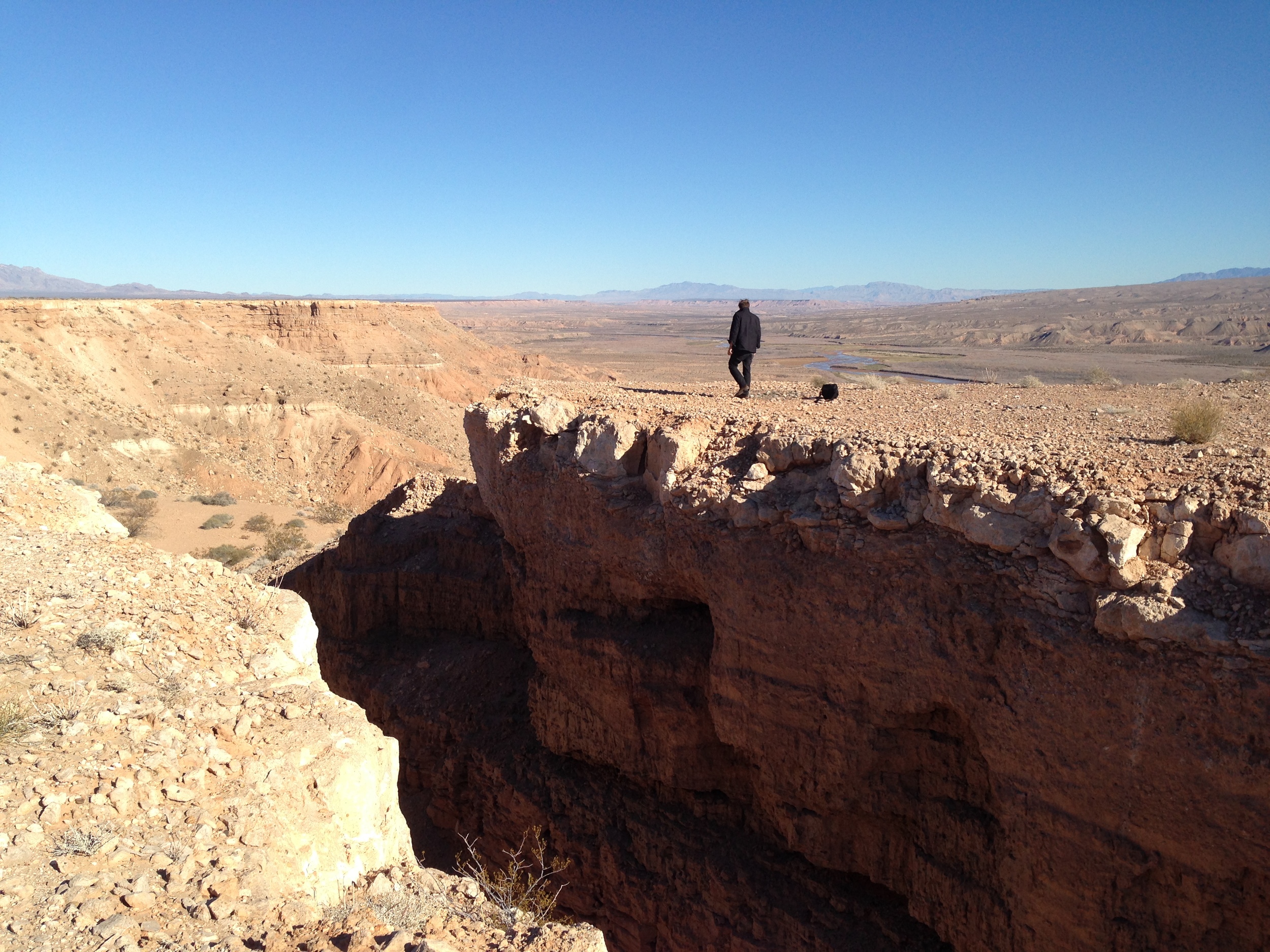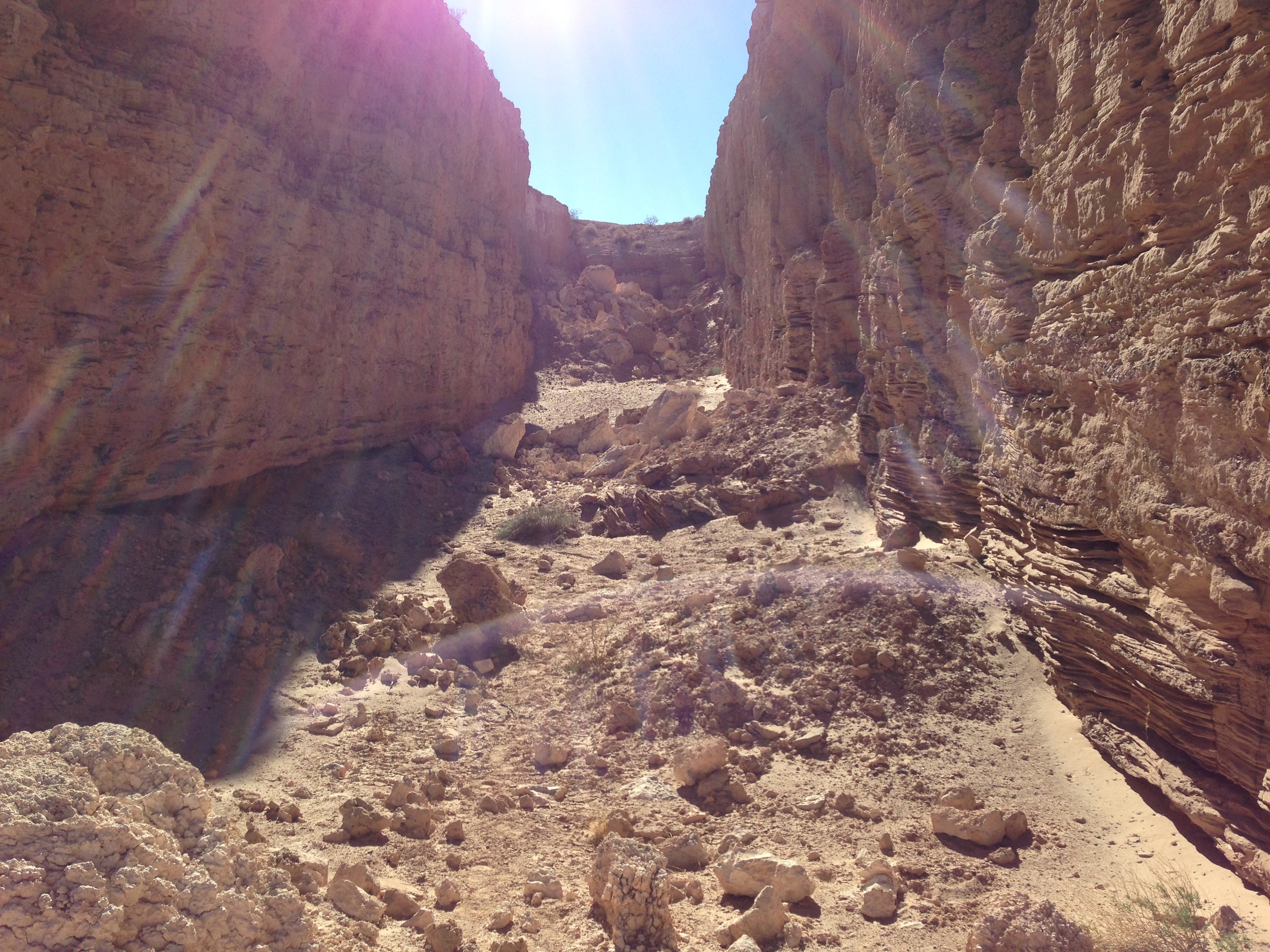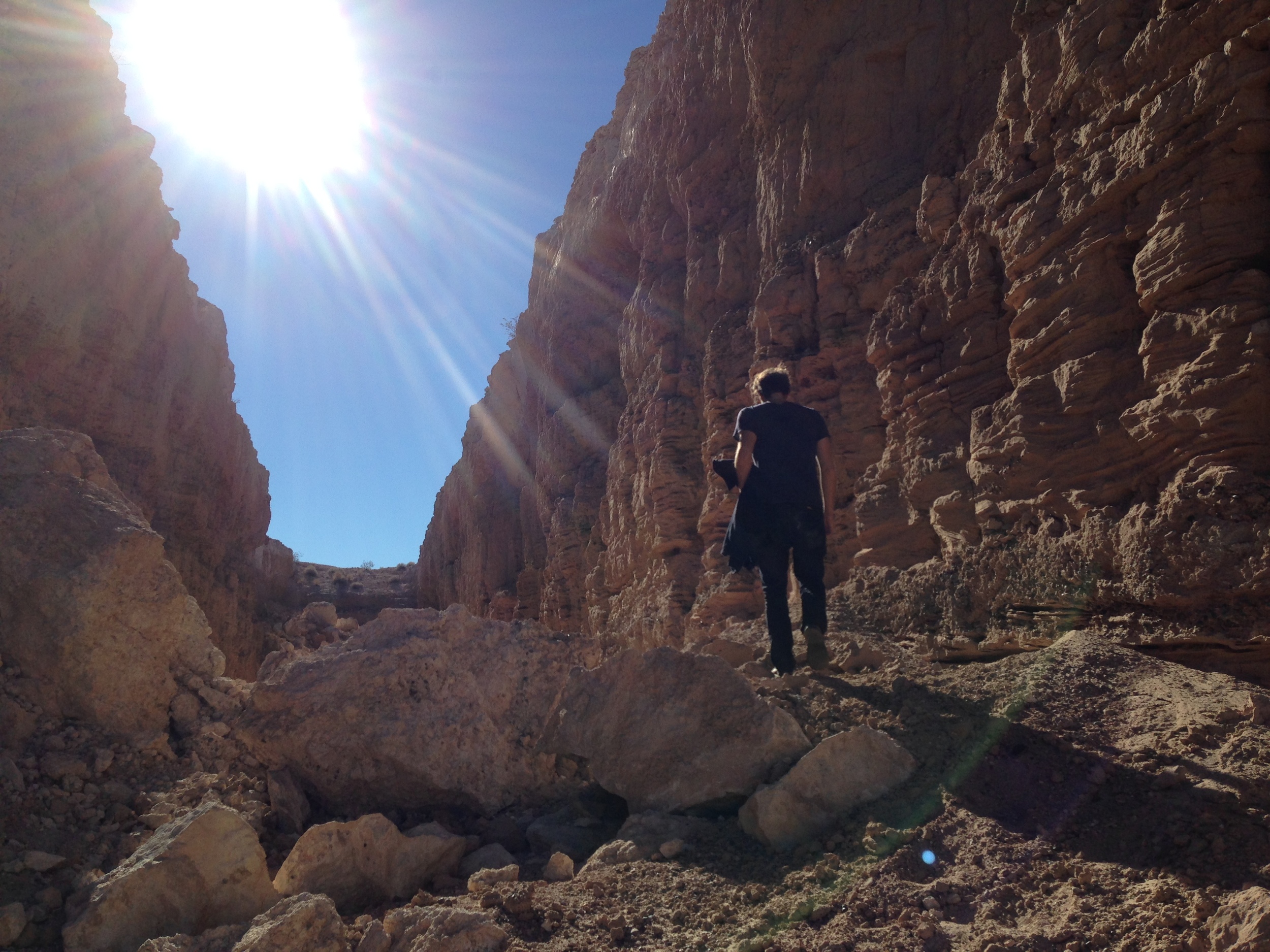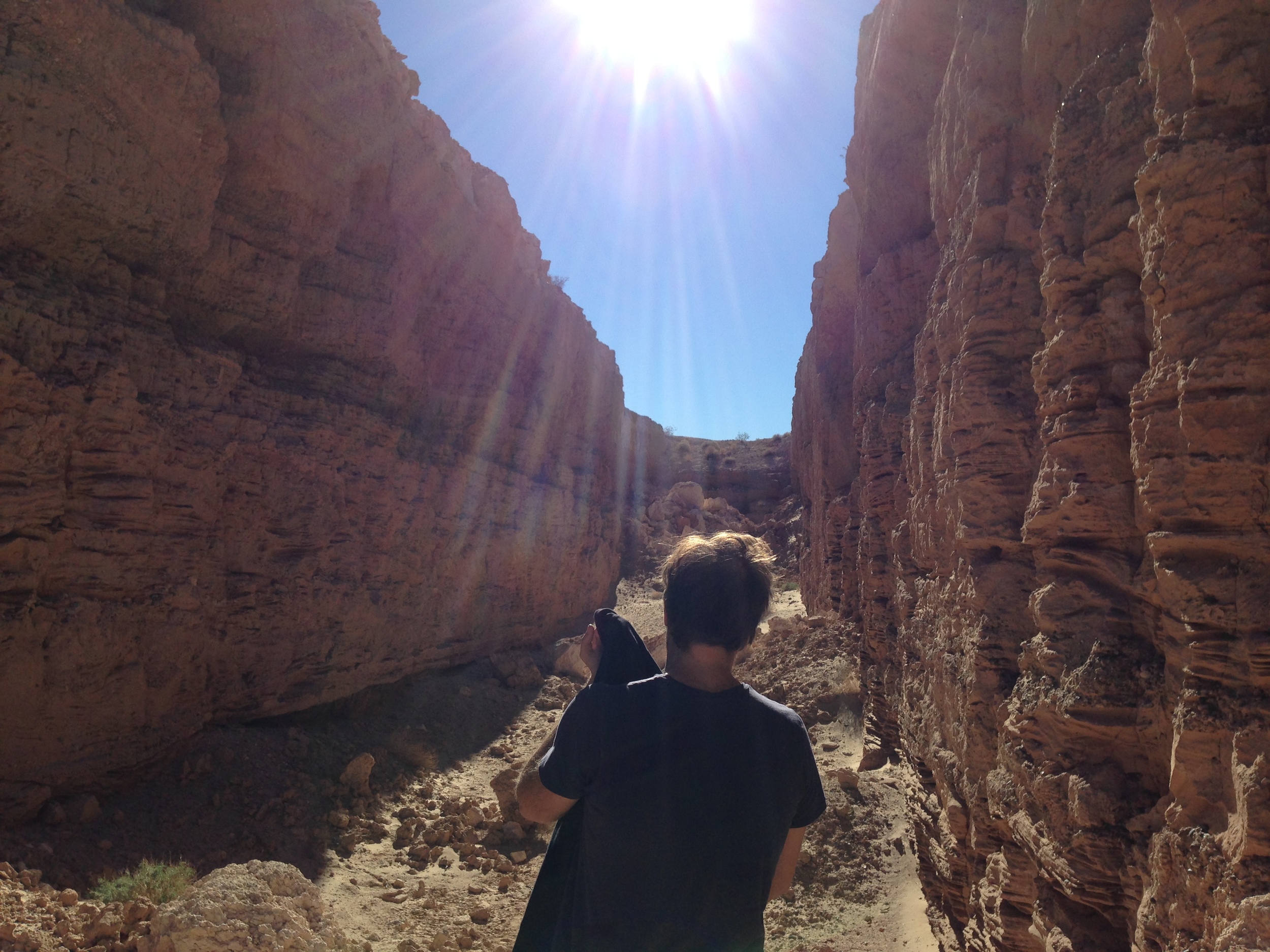In the mid-1960s, during the same period that Michael Heizer was making large-scale, shaped, "negative" paintings in his New York City studio, he began a series of trips to his home states of Nevada and California to experiment on the expansive raw canvas of the American desert landscape, where he created "negative" sculpture. The genre that he and his colleague Walter De Maria invented there—later dubbed "Earth art" or "Land art"—changed the course of modern art history. Working largely outside the confines of the gallery and the museum, Heizer went on to redefine sculpture in terms of scale, mass, gesture, and process, creating a virtual lexicon of three-dimensional form.
Heizer's Double Negative (1969) comprises two giant rectangular cuts (and the space in between them) in the irregular cliff edges of a tall desert mesa near Overton, Nevada. This monumental piece is iconic of the period and of works made in and of the landscape, as are Robert Smithson's later Spiral Jetty (1970), in Utah, and De Maria's The Lightning Field (1977), in New Mexico. Facing each other in the cliffs on either side of a wide cleft in the mesa, the cuts define rectilinear spaces from which bulldozers have removed the sandstone strata and rock. These spaces might as aptly be compared to the large-scale feats of modern engineering, or to the monumental earthen architecture of ancient times, as to sculpture. Thus, Heizer's work constitutes a challenge to sculpture's long history.
When driving out to visit this must-do art trek, you are enlivened by Dia's minimal information, as you are climbing into backcountry through roads, with no evidence you are heading in the right direction, spare a cattle gaurd. You are sort of floating above on this windtaken Mesa, and freely roaming towards the fabled Negative space.
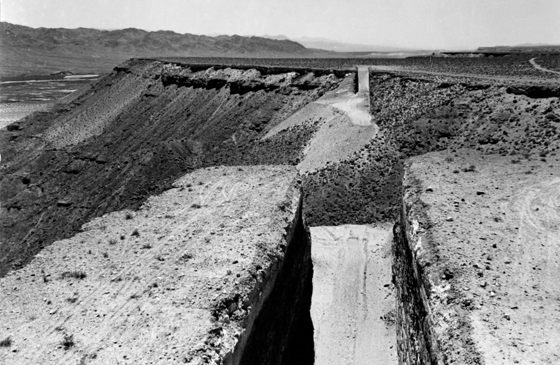
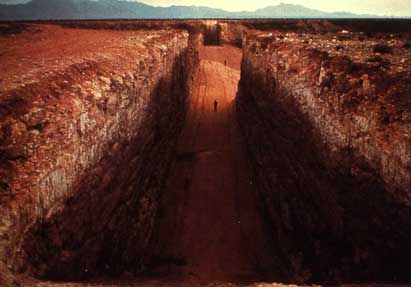
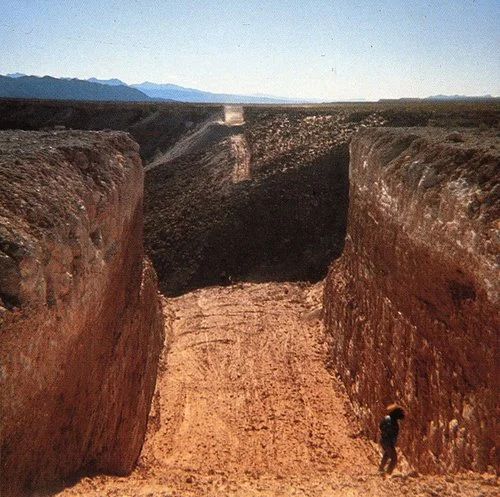
Sources: Dia, LA arts weekly, Land Arts Organization , CLUI, College of Marin


